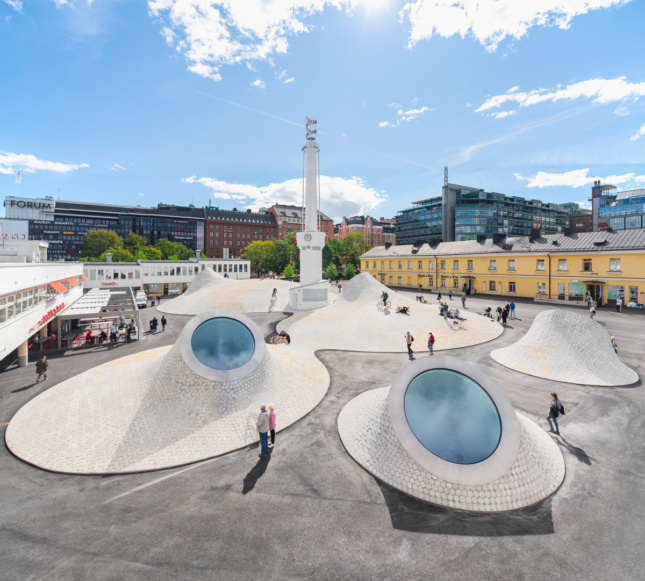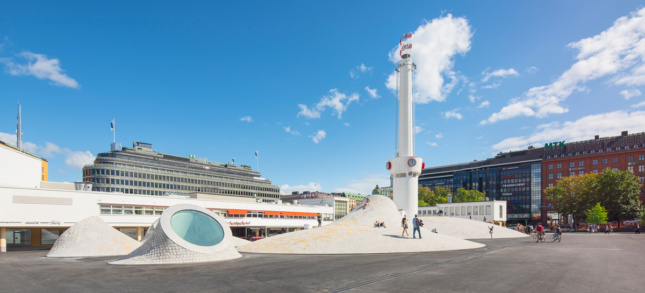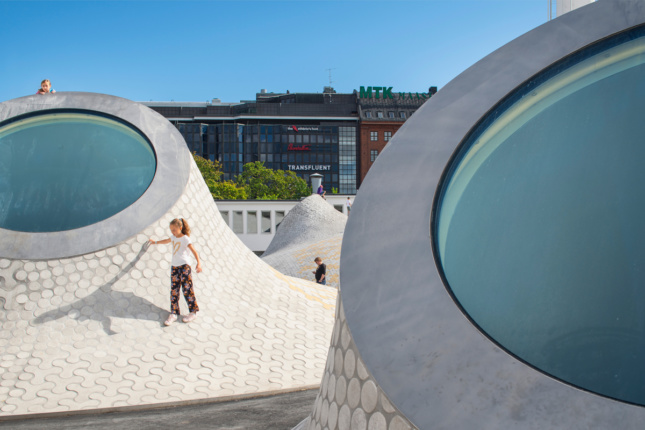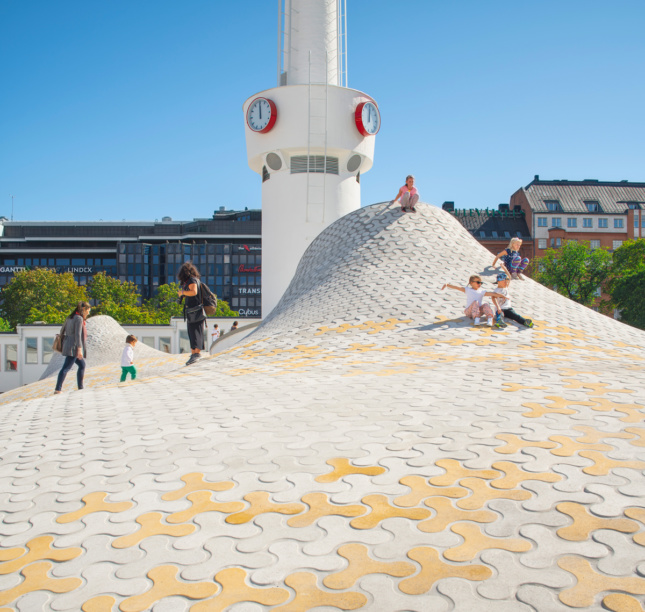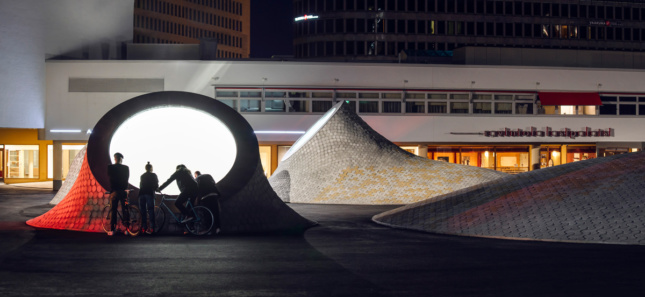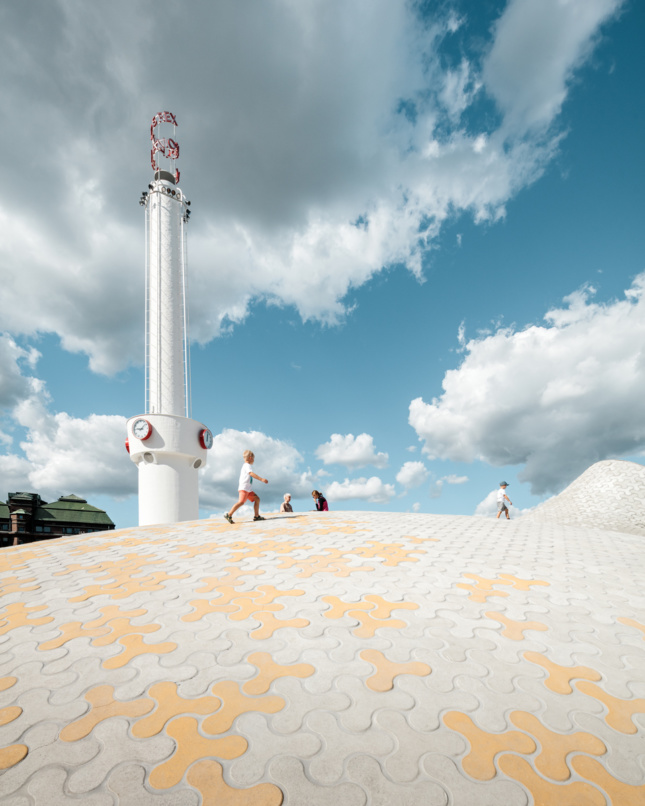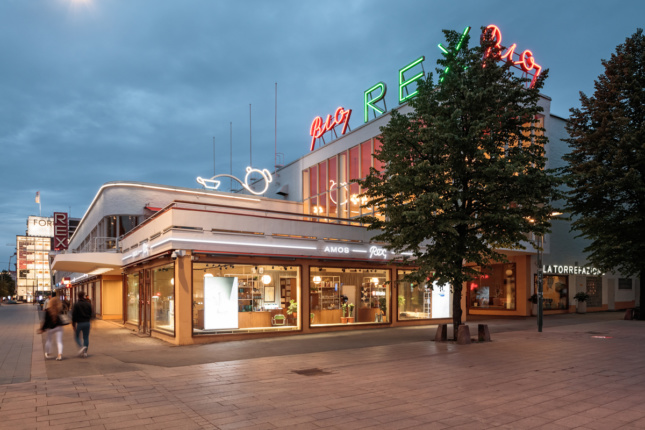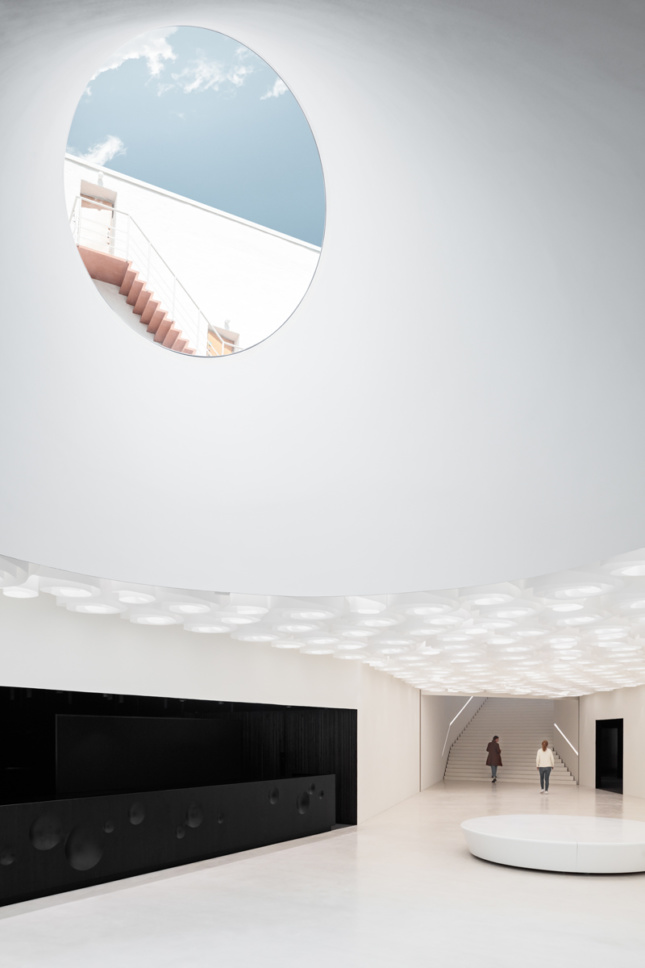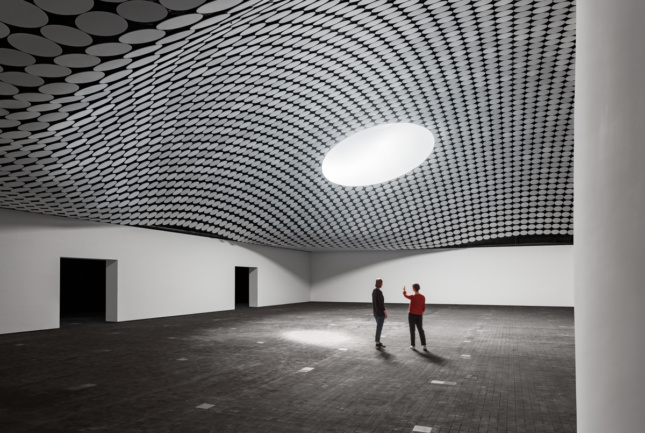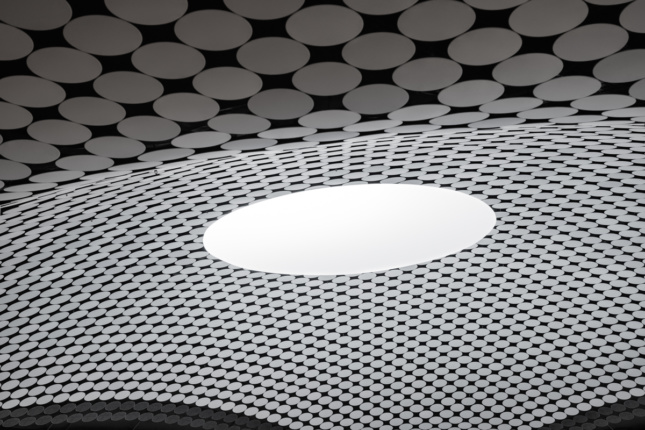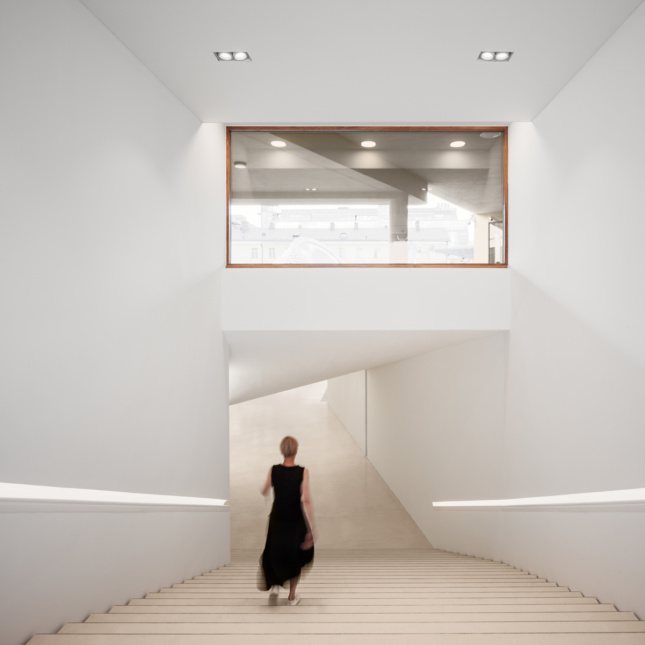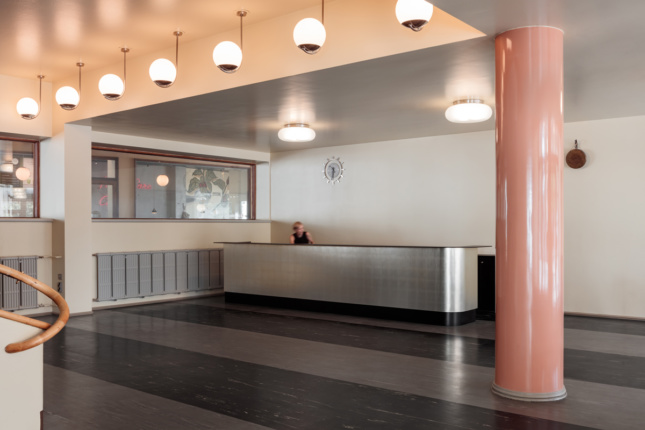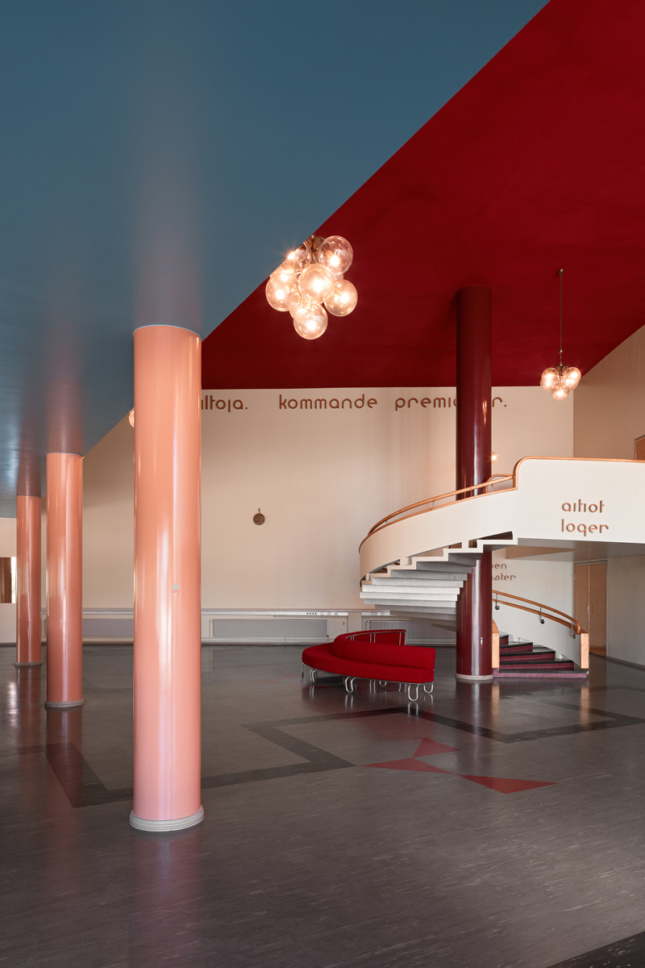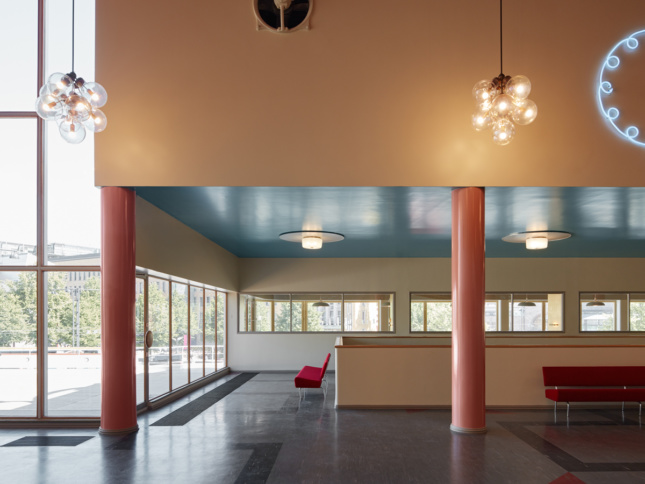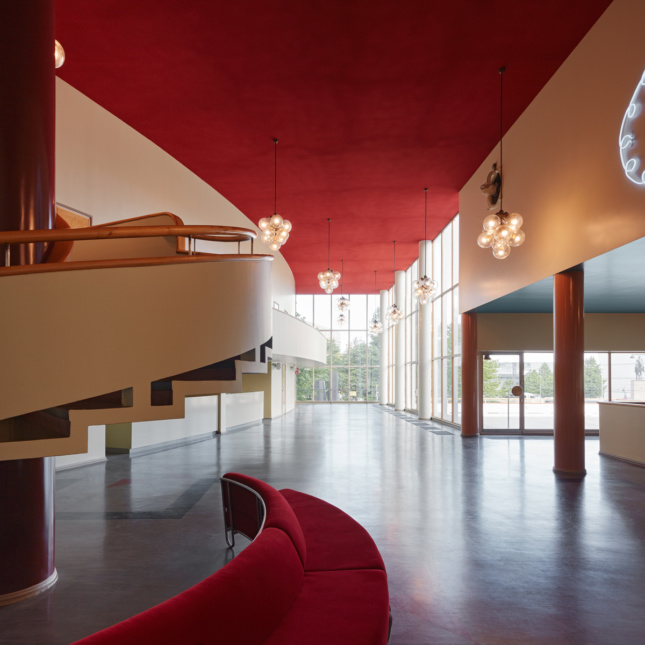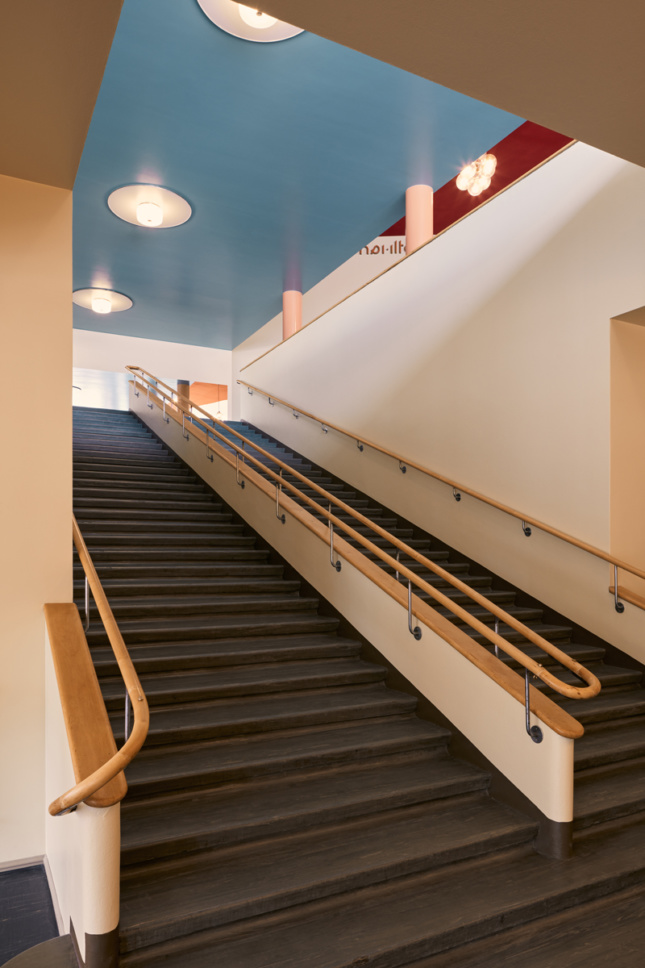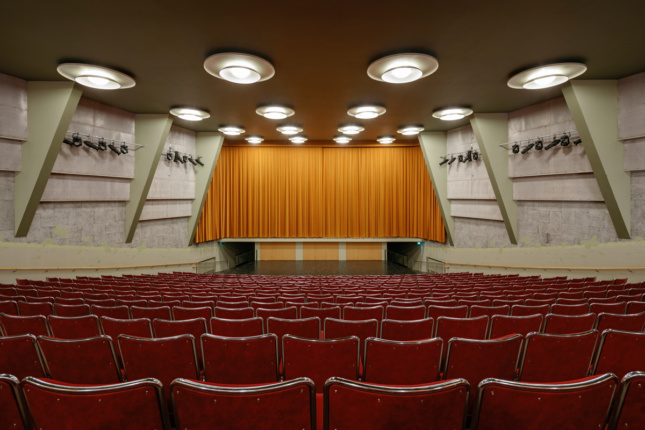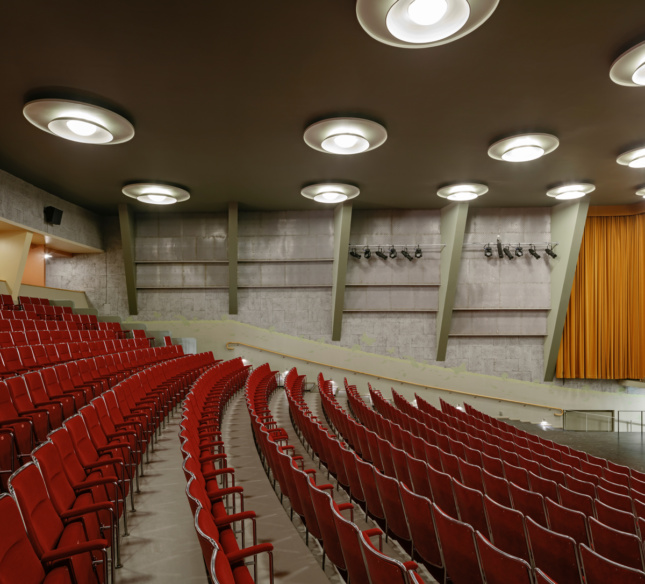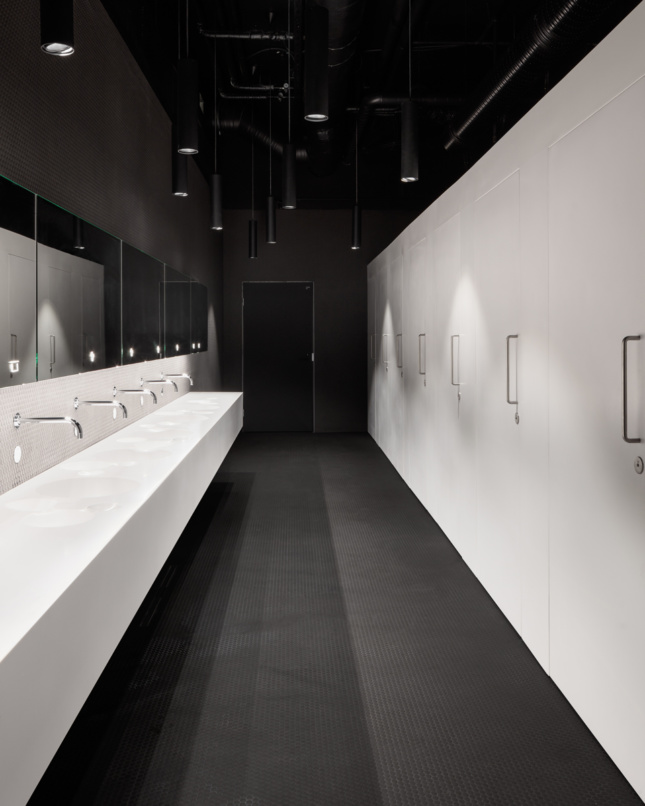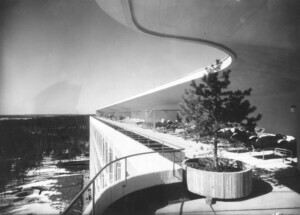A pink gecko scuttles across a psychedelic digital landscape, deftly navigating a tangled maze of drifting butterflies, waddling alligators, and a pair of pensive whales passing below. Stepping on any creature will result in its explosive demise, yet simply navigating the trippy environment renders such destruction inevitable. This sort of high-tech super-nature is par for the course in Japanese art collective teamLab’s immersive exhibitions but a first for Helsinki, Finland—and Amos Rex, the new art museum hosting the group’s first show in the Nordic region.
The five-year, $64-million Amos Rex project was carried out by local Finnish firm JKMM and supported largely by Konstsamfundet, the association behind the old Amos Rex Art Museum (RIP 1965–2017). The project involved both a $17-million facelift of Lasipalatsi, the “Glass Palace” built in central Helsinki in the 1930s by three Finnish architecture students for the 1940 Helsinki Olympics (which was postponed until 1952 due to the Second World War), as well as the construction of a new underground art museum particularly well-suited for new media and immersive installation art.
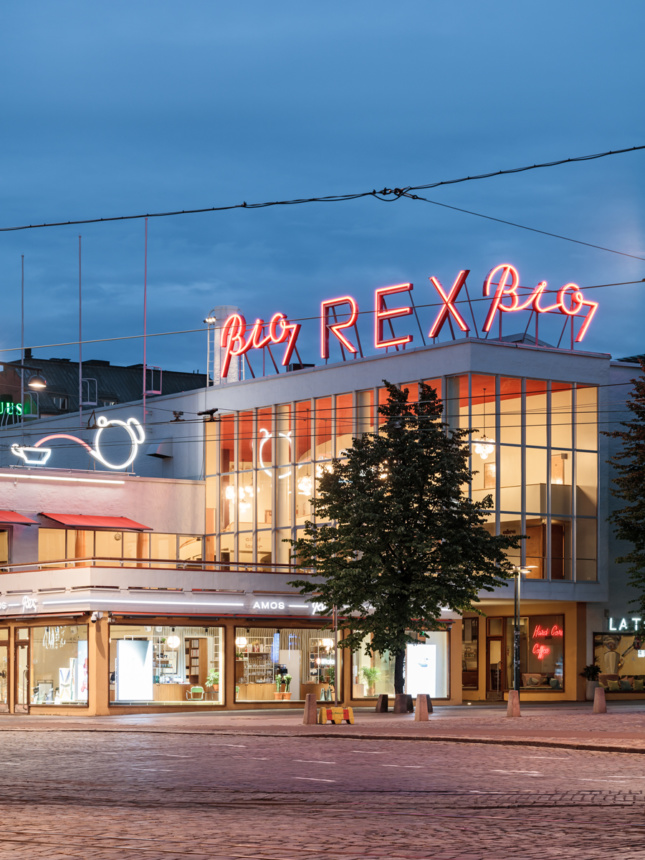
Because Lasipalatsi was originally supposed to be temporary, its young designers received carte blanche, resulting in an ambitious Functionalist fun home that includes a cinema, restaurants, shops, and a backdoor public square surrounded by 19th-century neoclassical barracks. Almost destroyed in the 1980s but listed and restored in the 1990s when it reemerged with a glorious inner coat of pastels, the Glass Palace is a resilient building with a tumultuous past. JKMM have taken care to preserve much of this history, including its doors and windows, fitted furniture and movie seats, plus the first outdoor neon sign in Finland.
The revitalized 550-seat art deco cinema and new film program will be the delight of many a cinephile, yet the most compelling aspect of Lasipalatsi—and where the old most energetically meets the new—is out back. Once the site of military parades, the historic public square has been transformed into a surreal lunar landscape, where a series of bulbous domes sporting large round windows now connects a veritable jungle gym of a plaza to an underground art hub.
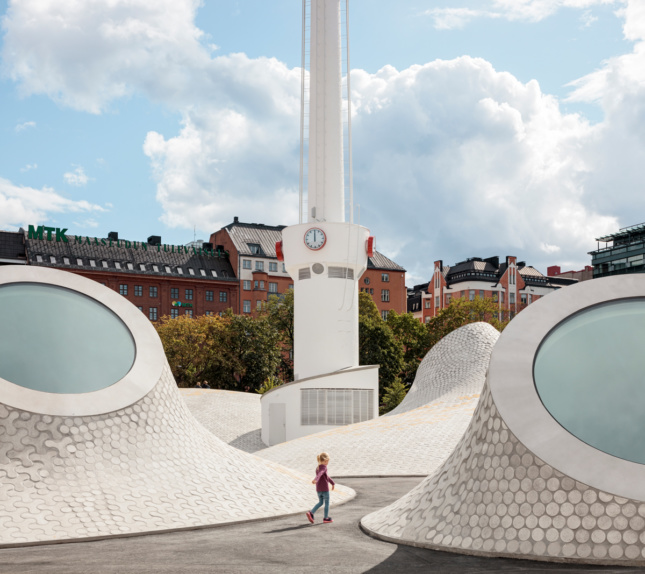
“I was sitting in a meeting a couple of weeks ago, when suddenly a man with a stroller appeared right outside the window of our second-floor office,” grins Timor Riitamaa, the head of communications and marketing at Amos Rex. “That was when I realized the park was open.”
Positioned somewhere between alien topography and an ancient lifeform, the textured concrete playscape is a total hit in Helsinki. Sunbathers, selfie-snapping teens, Instagram influencers, romping children, and even daredevil parents can be seen ascending the five volcano-like protrusions to peer down into the subterranean art world below. Within the museum, sliding butts, squished noses and photography wars are now as common a view as the art, which unfurls in a columnless 24,000-square-foot gallery space.
Building underground is never easy, and for JKMM it involved burrowing through nearly 140,000 square feet of hard bedrock found right underneath the city’s surface. Their approach was slow but steady—and went largely unnoticed. The square closed in 2015 so that the architects could carry out miniature controlled explosions, timed for every four minutes so the Helsinki Metro system could run undisturbed. It was a teeth-gritting exercise, but little of that angst can be felt from the ethereal white staircase connecting Lasipalatsi to the new museum lobby below.
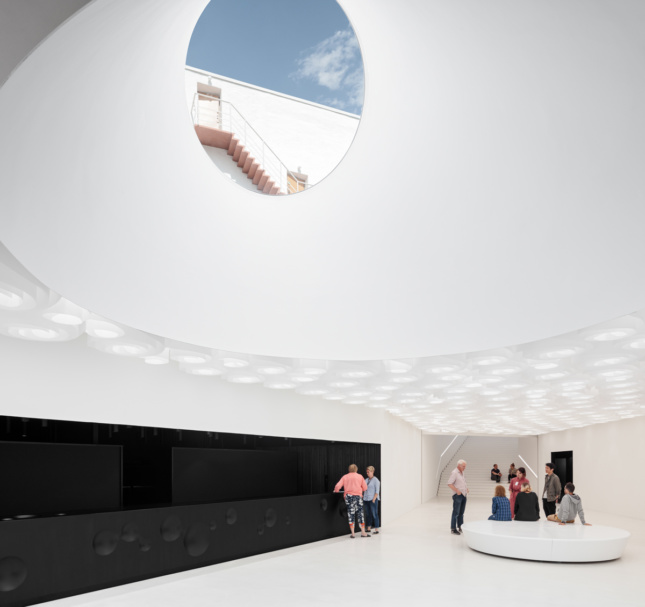
Descending the stairs, a generous view out onto the square framing Lasipalatsi’s old columns beside new sci-fi domes is swallowed up by a cloud of soft lighting. Designed by Finnish company Doctor Design, the textured ceiling of pleated fabric shades diffuses light through rows of flower-like pendants. Tightly bundled together in a way that floats between surrealism and Finnish National Romanticism, the lights are a clear nod to Lasipalatsi’s heritage.
The ceiling flower field yields to two large tunnels ending in angled circular skylights that peer out onto the public plaza some 20 feet above. One offers a significant view out onto the staircase of the old theatre, while the second was framed by the tiny hands and faces of several miniature onlookers during my visit. Futuristic circular benches are positioned directly below, seemingly at the ready for sky-gazers.
“We wanted the feeling of going underground to be as positive and light as possible,” says Kai Kartio, director of Amos Rex. “We had to go under, but our solution was to bring the museum upwards—you always have contact with daylight,” confirms Freja Stahlberg, the project architect. The extent of the sculptural skylights’ magnetic effect on the public square above was a delightful surprise for both architect and museum.
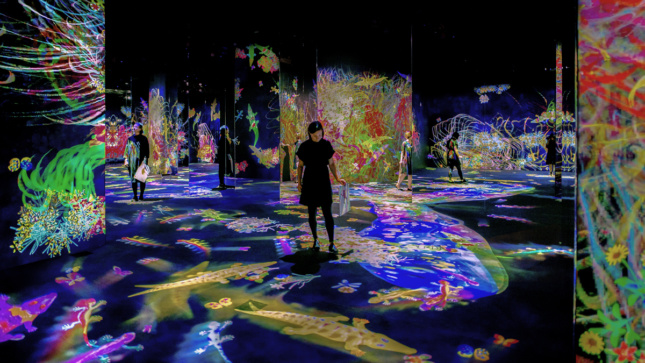
Back below ground, Massless, the inaugural exhibition by teamLab, echoes the world-making imagination of the architects. Four immersive installations make full use of JKMM’s revolutionary modular museum layout, realized through an acoustic-disk ceiling made from perforated aluminum and a wooden gridded floor below which “data, air, and power all flow,” according to the architect. The museum’s high-tech fixtures meet their match in the 137 projectors, motion sensor technology, and eight miles of cables that make up teamLab’s digital multiverse.
The exhibition consists of fan favorites like Graffiti Nature as well as Vortex of Light Particles, a site-specific piece that involves an inverted waterfall seemingly bent on sucking visitors into an Anish Kapoor-like black hole that inhabits the main domed ceiling. Vortex is clearly the stuff of tripping nerds’ dreams (it was a hit among Silicon Valley tech bros at Pace in Palo Alto), while its dark dreamscape subverts the light-filled expectations of Amos Rex, proving the museum’s versatility.
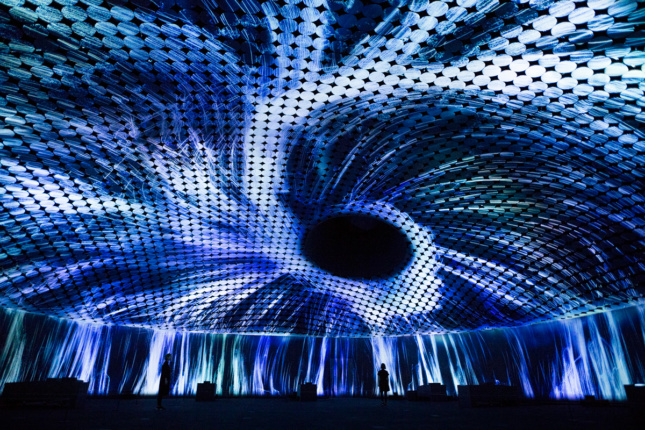
“Virtual reality isolates you in a virtual space. We are trying to bring everyone back to a physical space,” said teamLab member Nonaka Kazumasa. While Massless uses digital technology to bring its viewers closer to nature and each other, Amos Rex performs the larger function of bringing untraditional art experiences to Helsinki’s public in a spatially-sensitive and cost-effective way. It is a cunning answer to the city’s future urban development plan that prioritizes inner-city densification, but Amos Rex should also be seen as a testament to the merits of building deeper and the informal spaces for public play that can bubble up to the surface.






